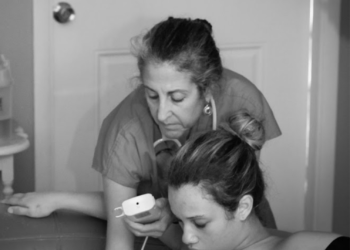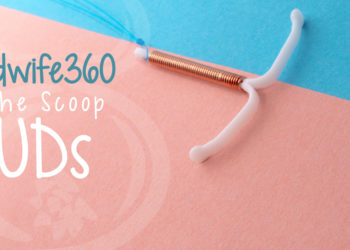As a breastfeeding mom, you may have heard about mastitis, a common infection that can occur when bacteria enters the breast tissue. Mastitis can cause painful inflammation, making breastfeeding uncomfortable and challenging.
However, with proper treatment and care, you can find relief and continue to nourish your baby. In this comprehensive guide, we will explore mastitis treatment options, prevention strategies, and the importance of seeking professional care.
Understanding Mastitis: Causes and Symptoms
Mastitis is an infection that primarily affects breastfeeding individuals. It occurs when bacteria enter the breast tissue, causing inflammation and discomfort. Common causes of mastitis include:
- Clogged Milk Ducts: When milk ducts become blocked, the milk can’t flow freely, leading to engorgement and increasing the risk of infection.
- Cracked Nipples: Cracks or blisters on the nipple can serve as entry points for bacteria, increasing the likelihood of developing mastitis.
- Improper Breastfeeding Technique: Incorrect latching or infrequent feeding can contribute to milk stasis and the development of mastitis.
- Weakened Immune System: Being overly fatigued, stressed, or having poor nutrition can compromise your immune system, making you more susceptible to infections like mastitis.
Recognizing the symptoms of mastitis is crucial for early intervention and treatment. Common signs of mastitis include:
- Breast Pain and Tenderness: The affected breast may feel sore, tender, and painful to the touch.
- Swelling and Redness: The breast may appear swollen, feel warm, and exhibit red patches.
- Fever and Chills: Mastitis can cause flu-like symptoms, including fever and chills.
- Hardened Lumps: Some individuals may experience the formation of hard lumps in the breast.
If you suspect you have mastitis, it’s important to seek medical advice promptly. Midwife360, a renowned healthcare provider specializing in women’s health, offers comprehensive care and treatment options for mastitis. Their experienced professionals can guide you through the process of diagnosis, treatment, and prevention.
Mastitis Treatment Options
Prompt treatment is essential to alleviate mastitis symptoms and prevent complications. The primary treatment for mastitis is a combination of antibiotics and self-care measures. Here are some effective treatment options:
Antibiotics
Your healthcare provider may prescribe antibiotics to combat the bacterial infection causing mastitis. It’s crucial to complete the full course of antibiotics, even if your symptoms improve before finishing the medication. Antibiotics not only help clear the infection but also ensure it doesn’t progress into a more severe condition. Always consult with your healthcare provider or midwife360 to determine the most suitable antibiotic for you and your baby.
Pain Relief
To manage pain and discomfort associated with mastitis, over-the-counter pain relievers such as acetaminophen or ibuprofen can be used. These medications help reduce inflammation and alleviate breast pain. However, consult with your healthcare provider or midwife360 before taking any medication to ensure they are safe for both you and your baby.
Emptying the Breast
Properly emptying the breast is crucial for relieving engorgement and promoting healing. Continue breastfeeding or pumping regularly to ensure milk flows smoothly and prevent further milk stasis. If direct breastfeeding is painful, consider expressing milk manually or using a breast pump. Emptying the breast thoroughly helps clear any blockages and reduces the risk of infection.
Heat and Cold Therapy
Applying heat or cold to the affected breast can provide relief from pain and inflammation. Use a warm compress, such as a warm towel or a heating pad, to improve blood circulation and reduce discomfort. Alternatively, a cold compress or ice pack can help reduce swelling and numb the area. Remember to wrap the cold pack in a cloth to prevent direct contact with the skin.
Rest and Hydration
Resting and staying hydrated are essential components of mastitis treatment. Fatigue can weaken your immune system, making it harder to fight off the infection. Ensure you get enough rest and prioritize self-care during this time. Additionally, staying hydrated by drinking plenty of fluids supports overall health and aids in the recovery process.
Supportive Measures
Wearing a well-fitting and supportive bra can help alleviate symptoms and provide comfort. Avoid wearing tight-fitting bras that can restrict milk flow and exacerbate engorgement. Opt for bras made from breathable materials to promote air circulation and reduce moisture buildup, which can harbor bacteria.
Prevention Strategies for Mastitis
Prevention is key when it comes to mastitis. By implementing simple strategies, you can minimize the likelihood of developing mastitis. Here are some preventive measures to consider:
Proper Latching and Positioning
Ensuring a correct latch and proper positioning during breastfeeding can prevent milk stasis and reduce the risk of mastitis. Seek guidance from a lactation consultant or your healthcare provider to learn proper breastfeeding techniques. Midwife360 offers comprehensive support in this area, empowering you with the knowledge and skills to establish successful breastfeeding.
Frequent and Complete Breast Emptying
Breastfeed your baby frequently and aim to fully empty each breast during each feeding session. This helps prevent milk accumulation and reduces the risk of clogged milk ducts. Avoid skipping or delaying feedings, as this can lead to engorgement and potential mastitis development.
Keep Breasts Clean
Maintaining good hygiene is essential for preventing infections. Wash your breasts before and after breastfeeding to keep the area clean and reduce the risk of bacterial contamination. Use mild soap and warm water, and gently pat dry with a clean towel.
Proper Bra Fit
Wear a well-fitting bra that provides adequate support without being too tight. A properly fitted bra ensures proper milk flow and reduces the likelihood of engorgement. Avoid wearing bras with underwires or restrictive materials that can compress the breast tissue.
Self-Care and Well-being
Taking care of yourself is crucial in preventing mastitis. Prioritize self-care activities, such as getting enough rest, eating a balanced diet, and managing stress levels. Engage in activities that promote overall well-being, such as exercise, meditation, or spending time with loved ones.
Seeking Care from Midwife360
Midwife360 is a trusted healthcare provider specializing in women’s health, including the treatment and management of mastitis. Their team of experienced midwives and healthcare professionals offers comprehensive care and support throughout your breastfeeding journey. Whether you require guidance on proper breastfeeding techniques, treatment for mastitis, or preventive strategies, Midwife360 is dedicated to providing personalized care tailored to your specific needs.
Nurturing Your Breastfeeding Journey
Mastitis can be a challenging condition for breastfeeding individuals, but with the right treatment and support, you can overcome it and continue to nourish your baby. By understanding the causes, recognizing the symptoms, and seeking prompt care, you can effectively manage mastitis.
Additionally, adopting preventive measures and accessing comprehensive care from providers like Midwife360 can help ensure a smooth and fulfilling breastfeeding journey. Remember to prioritize self-care, seek professional guidance, and cherish the special moments of bonding with your baby.

















